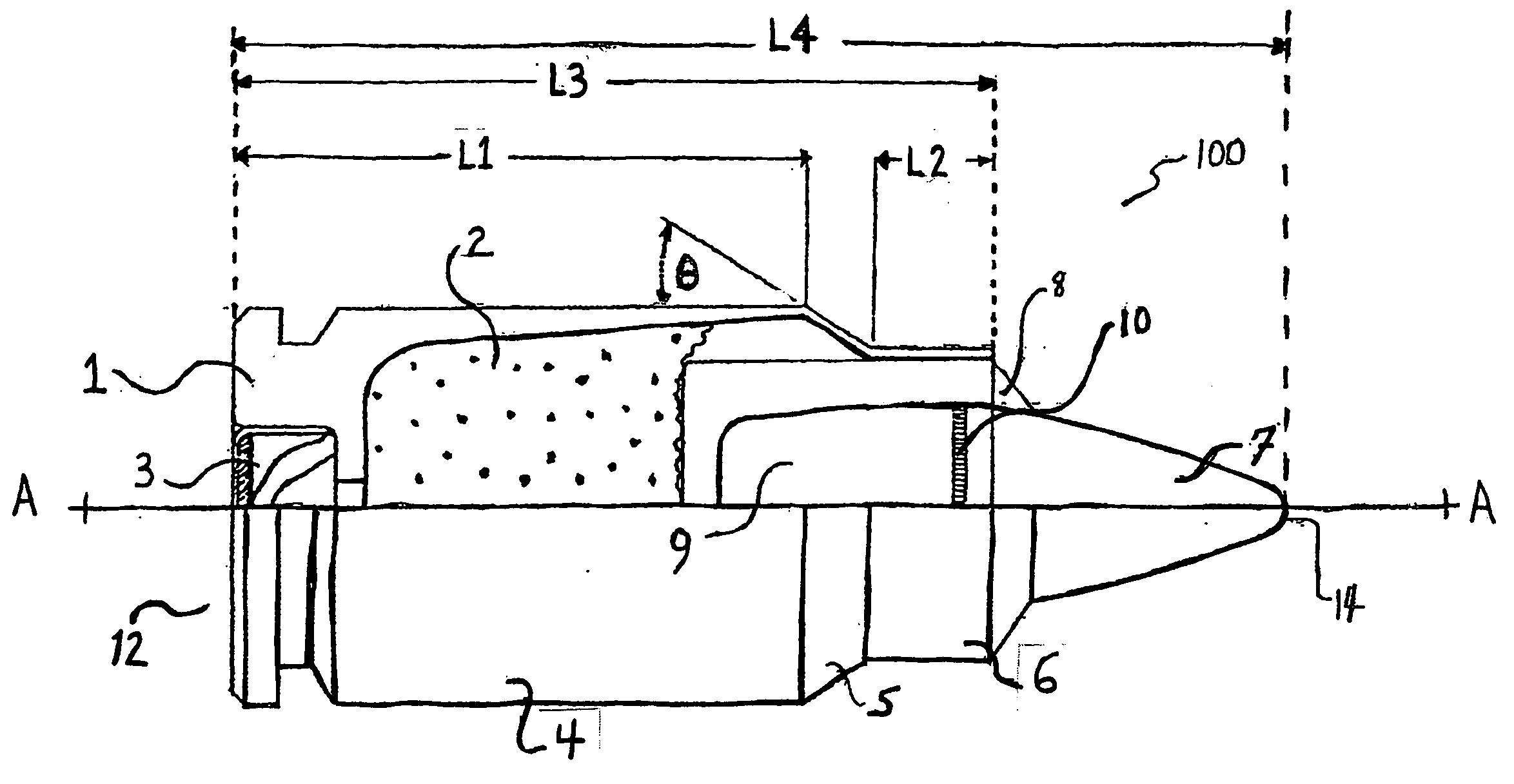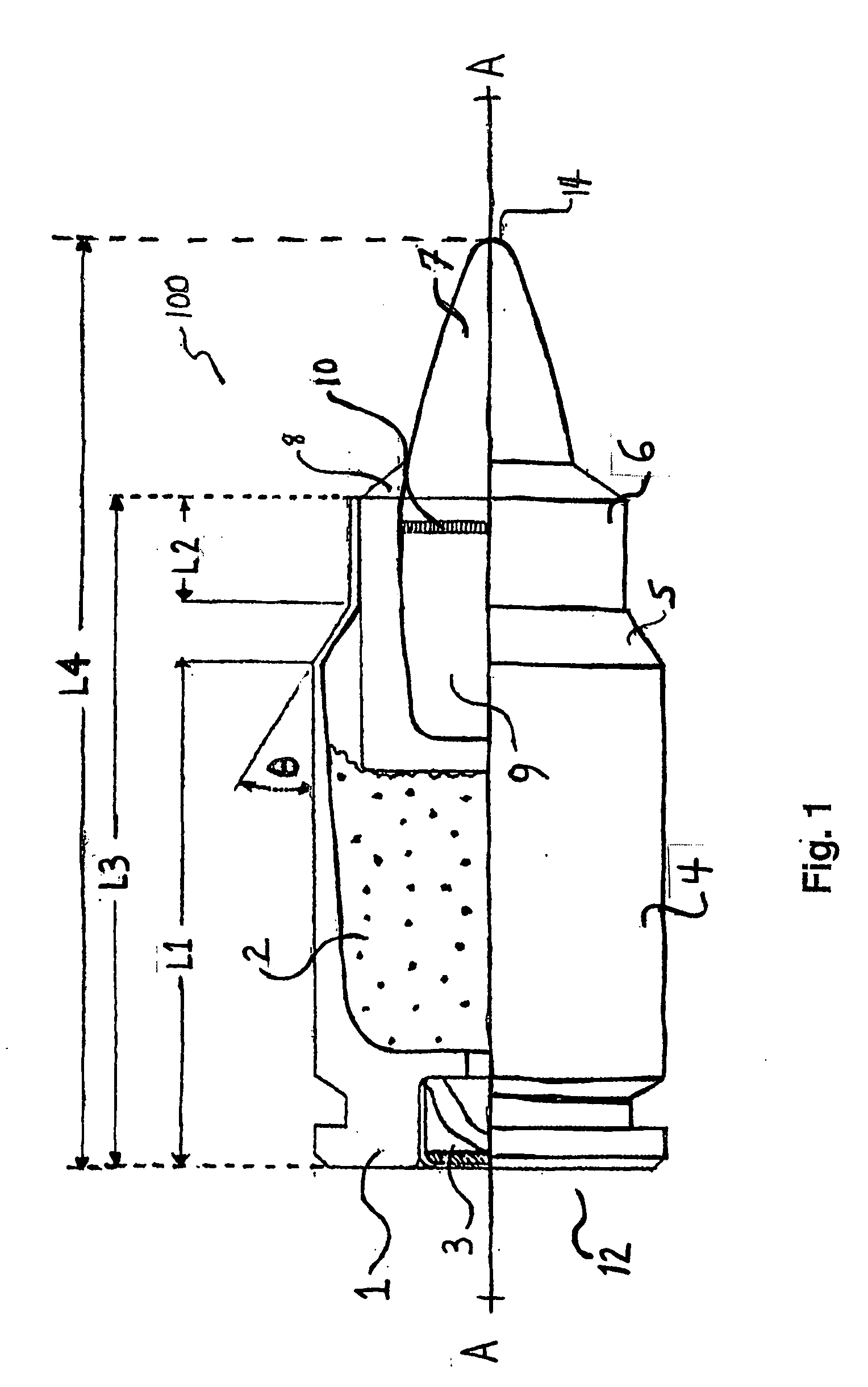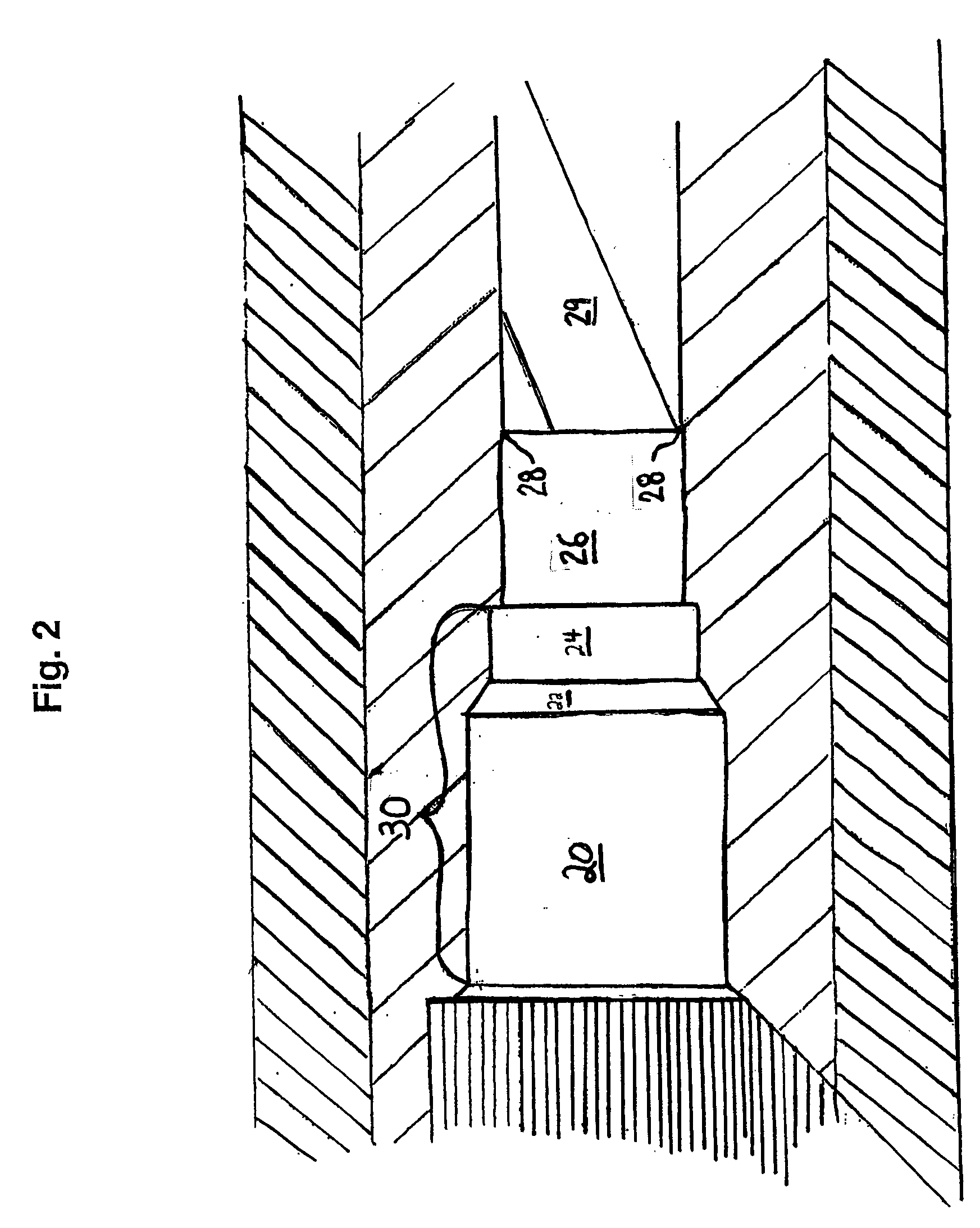However, current designs of a necked pistol cartridge which achieve the required velocities with small projectiles typically have a short, large diameter case with a very large change in diameter between the case and the neck.
In such a cartridge design, two inefficiencies occur that actually prevent the cartridge from achieving the desired effect.
First, as the volume within the cartridge is limited by the requirement for compact dimensions it is necessary to employ an energetic
propellant which by its nature will release
combustion products quickly.
However the large ratio of cartridge diameter to
neck diameter will only allow
combustion products to pass into the
barrel and hence propel the projectile at a certain rate, the cartridge being effectively choked.
For the small cartridge these two constraints oppose one another and it becomes very difficult to provide a
propellant that will release energy sufficiently slowly to not burst the weapon but still have enough energy within the given volume to achieve the required velocity.
This problem generally becomes unsolvable with normally available propellants for cartridges intended to operate in a variety of environmental conditions, such as those typical for a military application.
In particular, many military weapons must be able to operate in temperatures
ranging from minus forty to one hundred twenty degrees Fahrenheit, and currently known cartridge designs have generally not achieved a sufficient release of energy within a small cartridge volume in such a wide range of temperatures using available propellants.
The second inefficiency resulting from having a necked cartridge is again related to the large changes in diameter required in the cartridge case.
Because this transition area is large the force generated is now typical of that generated within a
rifle cartridge and is generally much too great for the small mechanisms associated with a pistol.
However, this negates the benefits of a small compact firearm.
Although improved materials and tolerances may be used to withstand the higher pressures, such measures typically result in uneconomical manufacturing and provide a weapon that generally has a low reliability.
However, using a carrier or a
sabot within a smaller weapon, such as a sidearm or pistol, where a conventional cartridge case has essentially a uniform diameter, has not been successful.
Particularly, in sidearms, the ratio of
sabot mass to projectile
mass is large and much of the
propellant energy is wasted on moving the sabot.
Further, while such a design may increase the projectile's velocity, it has previously not been found to suitably accommodate small projectile diameters needed for armor penetration.
Additionally, simply decreasing the diameter of the case to meet that of the projectile does not solve the problem because the ammunition will not reach sufficient exit velocity to penetrate armor.
Moreover, using the uniform diameter case resulting in either the larger projectile
mass or the slower exit velocities produces increased
recoil in existing small firearms during firing.
Although current ammunition cartridges for larger weapons, such as rifles and
machine guns, and for sidearms generally function well, conventional ammunition for such devices did not provide users of
small arms with significantly increased projectile velocity while decreasing
recoil felt by the firer.
Prior devices also did not provide
small arms ammunition firing a small diameter projectile that penetrates armor.
Prior devices and methods further do not produce a compact ammunition with acceptable internal pressures that can be used in a variety of operational conditions and environments including large temperature fluctuations.
 Login to View More
Login to View More  Login to View More
Login to View More 


